If you want to know about the fire tower or stairwell pressurization system or site analysis, please click the link.
Podium design guidelines can vary depending on the specific context and purpose of the podium. However, here are some general guidelines that can be applied:
Buildings on Podium
- Podium is a horizontal projection (platform) extending beyond the building footprint on one or more sides and may consist of one or more levels (see Figure below).


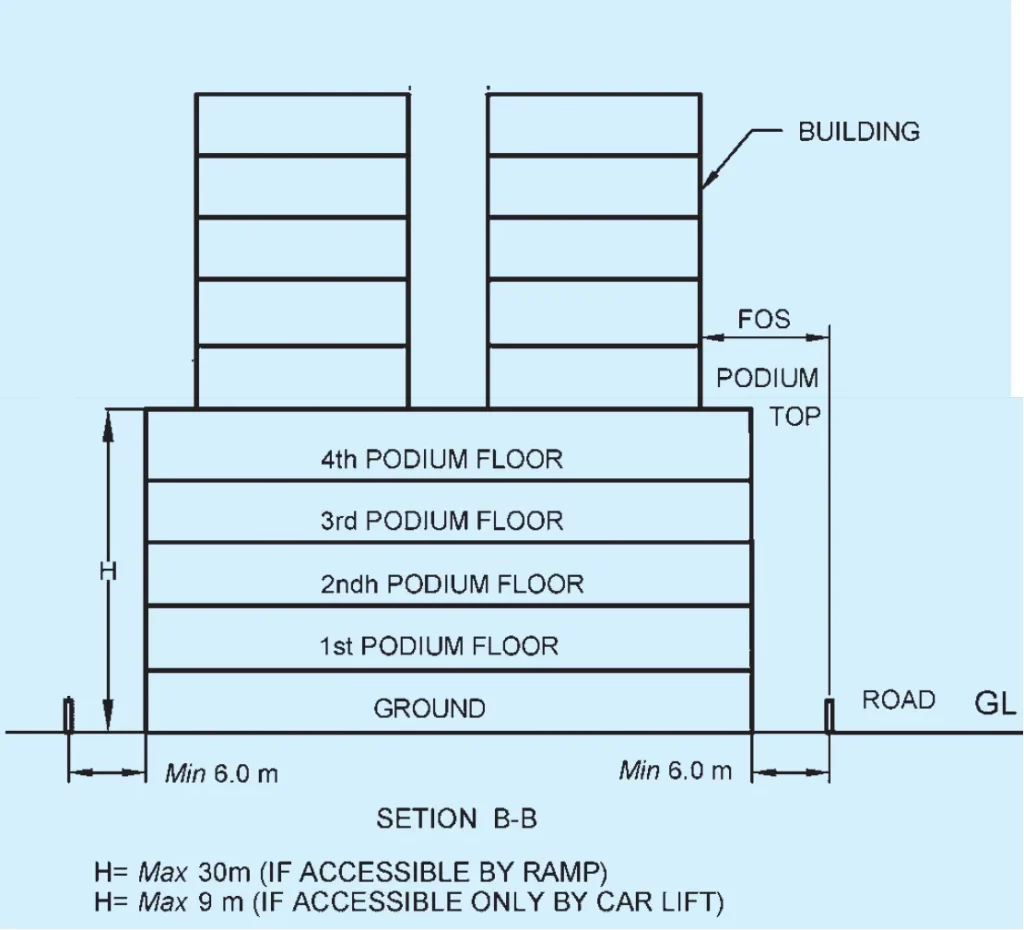
1) Uses permitted
Podium may be used for the following purposes:
- Parking of vehicles – When used for parking, one WC, two urinals and two washbasins for every 500 cars or part thereof, shall be provided on each podium floor. At least one accessible toilet complying with the requirements given in (handicapped toilet design) shall be provided preferably near the accessible parking. Provision for driver’s rest room for non-residential building shall be made.
- Fire and building services/utilities in accordance with the provisions of other Parts/Sections of the Code.
- Topmost podium slab which is open to sky maybe landscaped and/or be used as recreational open space; subject to provision of 1.6 m high parapet wall.
- Other habitable uses may be allowed by counting it in FAR subject to light, ventilation and fire safety requirements.
- Uses proposed in (1) to (3), shall not be counted towards FAR.
2) Requirements
Following requirements shall be satisfied for buildings constructed on podium:
- A podium may be permitted in a plot of area 1500 m2 or more.
- A podium, if provided with ramp, may be permitted in one or more levels, however the total height shall not exceed 30.0 m above ground level.
- In case a podium is not provided with ramp, but provided with car lift only, the same may also be permitted in one or more levels, however, the total height shall not exceed 9.0 m above ground level.
- Requirements for ramp for vehicles (see Figure below):

- One way ramp of clear width of minimum 3.0 m and two-way ramp with clear width of minimum 6.0 m shall be provided for LMV.
- One way ramp of clear width of minimum 4.5 m and two-way ramp with clear width of minimum 9.0 m shall be provided for LCV.
- One way ramp of clear width of minimum 6.0 m and two-way ramp with clear width of minimum 12.0 m shall be provided for HMV.
- Ramp slope shall be maximum 1 in 8.
- After a 40 m length of continuous ramp, a flat surface of minimum 6.0 m length shall preferably be provided (see Figure above).
- If podium is accessible to fire tender, minimum 7.5 m wide ramp shall be required for fire engine access with maximum slope of 1 in 10.
- Podium shall not be permitted in required minimum front open space.
- Podium, if accessible to fire tender, shall be so designed so as to take the load of fire tender weighing up to 45 t minimum or as per the requirement laid down by the Fire Department.
- Requirement of accessibility for elders and persons with disabilities shall be ensured in compliance with the provisions of NBC. which may require providing ramps with specified gradient or accessible lifts for access to different levels.
3) Requirements for fire tender movement
Buildings having height more than 15 m above ground level shall necessarily be accessible by fire tender, as follows (see Figure below):
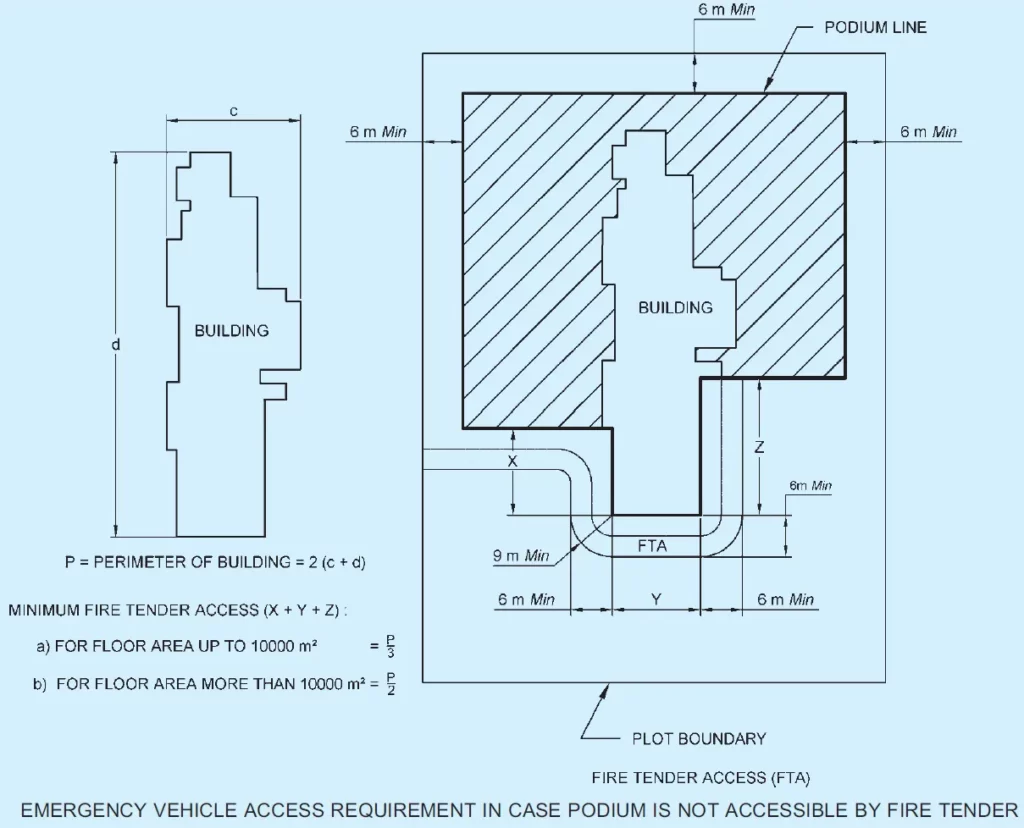
- For buildings having floor area less than 10000 m2, fire tenders shall have access to at least one-third of the perimeter of building which shall be minimum 6.0 m wide and having 9.0 m turning radius.
- For buildings having floor area more than 10000 m2, fire engine shall have an access to at least to half of the perimeter of building which shall be minimum 6.0 m wide and having 9.0 m turning radius.
- If podium is not accessible by fire tender, the podium may be such that it is not extended beyond the building footprint to an extent more than 11.0 m on the side where fire tender access is provided (see Figure below).
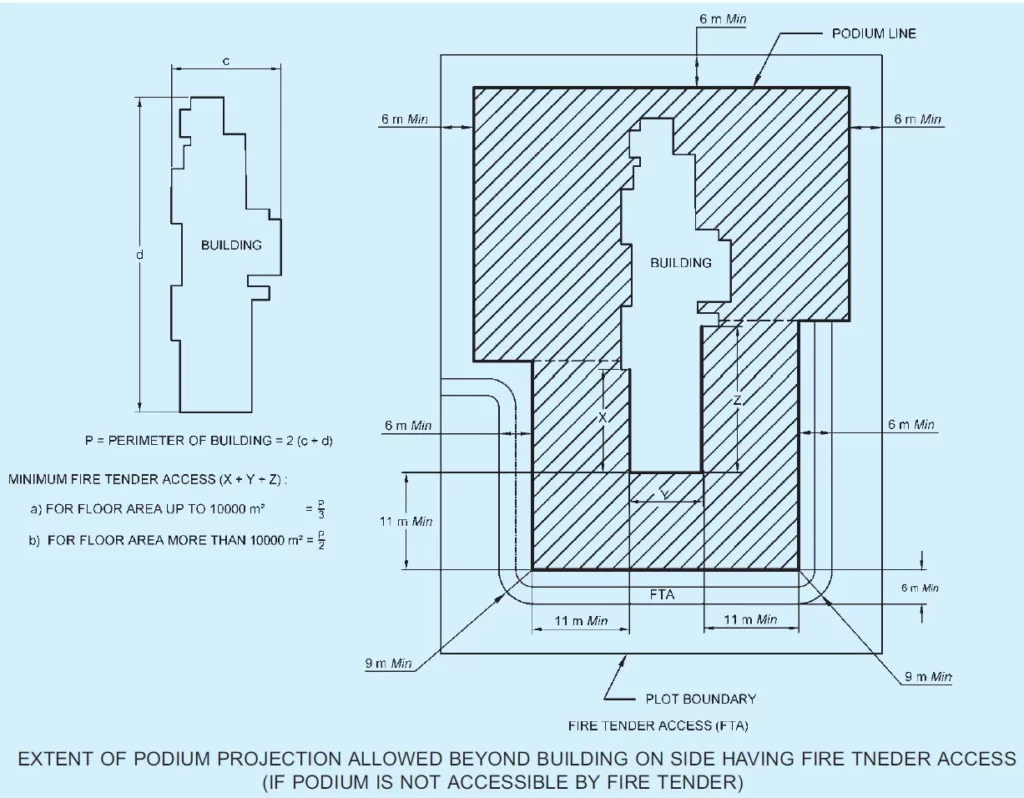
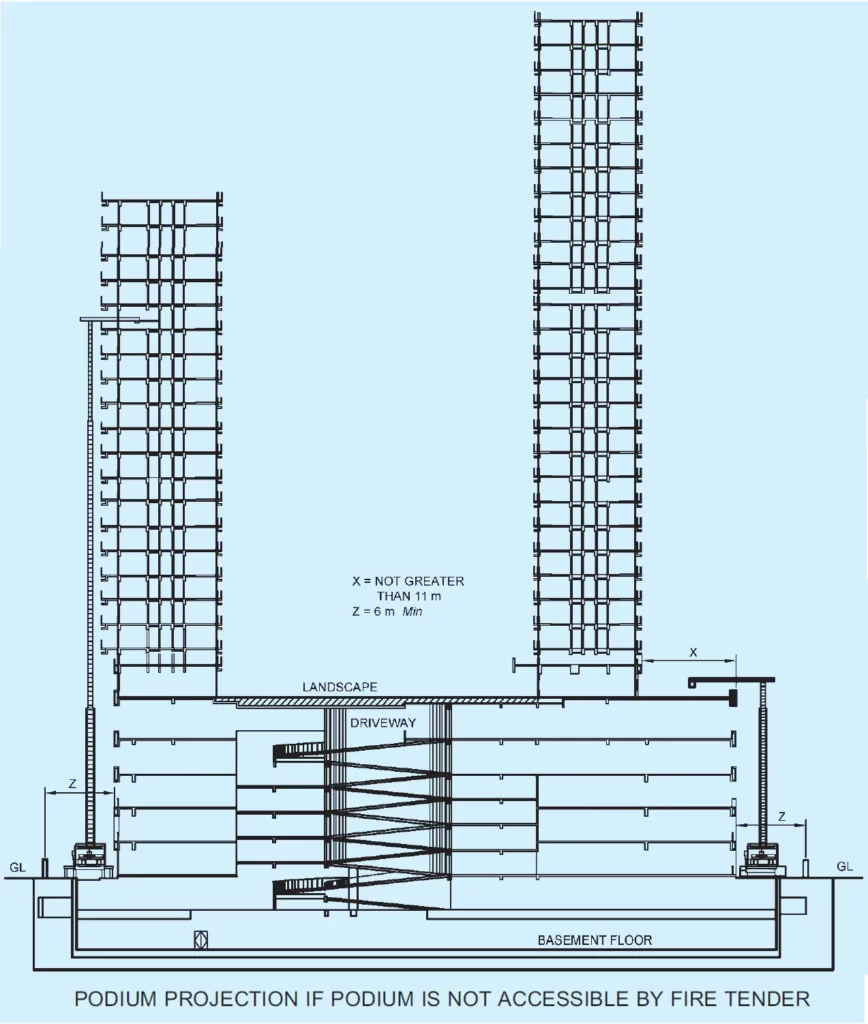
- Such restriction shall not apply in case podium is accessible by fire engine (see Figure below).
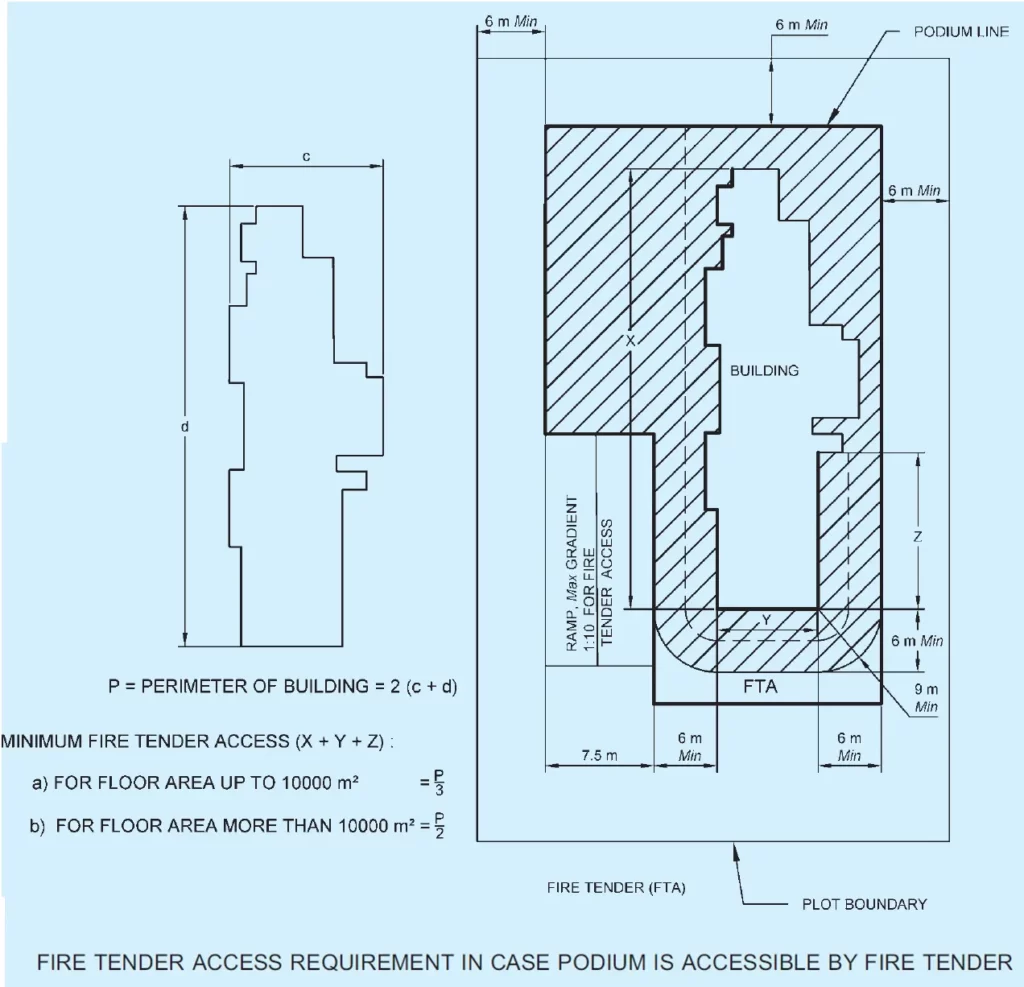
- Minimum 6.0 m driveway width and 9.0 m width at turning shall be available for fire tender movement all around the podium.
NOTE – The width and turning radius of ramp for fire tender access, and requirements of motorable open space for fire tender movement given above pertain to fire tender weighing up to 45 t and its operability. For heavier fire tenders, these shall be as per the requirement laid down by the Fire Department.
4) Cul-de-sacs
- Cul-de-sacs giving access to plots and extending from 150 m to 275 m in length with an additional turning space at 150 m will be allowed only in residential areas, provided cul-de-sacs would be permissible only on straight roads and further provided the end of cul-de-sacs shall be higher in level than the level of the starting point of such dead-end road.
- The turning space, in this case shall be not less than 81 m2 in area, with no dimension less than 9 m.
5) Intersection of Roads
For intersection junctions of roads meeting at right angles as well as other than right angles, the rounding off or cut off or splay or similar treatment shall be done, to the approval of the Authority, depending upon the width of roads, the traffic generated, the sighting angle, etc., to provide clear sight distance.